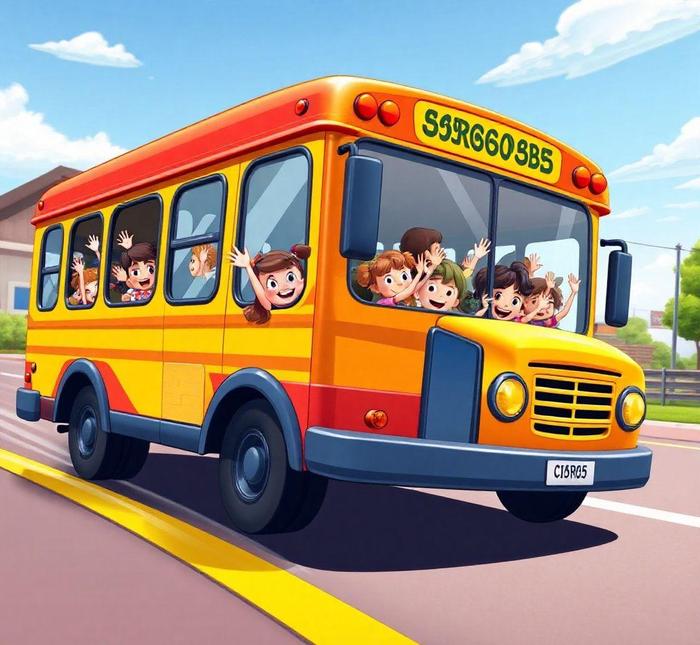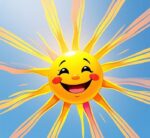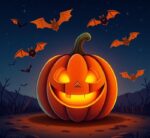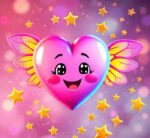- You are here:
- Home »
- words
- » Kindergarten Words That Start With L [LIST]

Kindergarten Words That Start With L [LIST]
When teaching young children, it’s important to introduce them to a variety of vocabulary words to help expand their language skills. One effective way to do this is by focusing on specific letters of the alphabet, starting with easy-to-pronounce and familiar words. The letter ‘L’ offers a wealth of fun and engaging words that can captivate young learners. These words not only help in building their vocabulary but also improve their ability to identify letter sounds, a crucial step in early literacy development.
In this article, we’ve compiled a list of kindergarten-friendly words that start with the letter “L”. Whether you’re a teacher, parent, or caregiver, these words provide a great foundation for encouraging language acquisition. From animals like ‘lion’ to everyday objects like “lamp”, these words cover a variety of themes that children will encounter in their daily lives. Using this list, educators can create fun, interactive lessons that promote learning through games, stories, and songs, ensuring that young learners are excited to practice new words.
Kindergarten Words That Start With L
1. Lamp
A lamp is a device used to provide light, often placed on a table or desk. Lamps are common in homes and classrooms, helping people see better in dark areas.
Examples
- The lamp in my room is very bright.
- I turned on the lamp so I could read my book.
- The lamp on the table is pink.
2. Lion
A lion is a large, wild animal that lives in Africa and Asia. It has a mane and is often called the ‘king of the jungle’ because it is strong and powerful.
Examples
- The lion is a big, strong animal.
- We saw a lion at the zoo today.
- A lion’s mane is very fluffy.
3. Leaf
A leaf is a flat, green part of a plant or tree that grows from a stem or branch. Leaves use sunlight to help the plant make food through a process called photosynthesis.
Examples
- The leaf turned yellow in the fall.
- I found a big leaf on the ground.
- Leaves change colors in autumn.
4. Lemon
A lemon is a yellow fruit that is sour. It is often used to add flavor to food and drinks, and is rich in vitamin C.
Examples
- I like to drink lemonade made from lemons.
- Lemons are sour but delicious.
- My mom added lemon to the soup to make it taste better.
5. Ladybug
A ladybug is a small, round insect that is often red with black spots. It is considered good luck and helps protect plants by eating pests like aphids.
Examples
- I saw a ladybug crawling on the leaf.
- Ladybugs are red with black spots.
- Ladybugs help keep gardens healthy by eating bugs.
6. Lake
A lake is a large body of water surrounded by land. Lakes can be used for swimming, fishing, and boating, and are important habitats for many animals.
Examples
- We went swimming in the lake on our vacation.
- The lake is full of fish.
- I like to watch the sunset over the lake.
7. Ladder
A ladder is a tool used to climb up or down to a higher or lower place. It is made of two long sides with steps or rungs between them.
Examples
- I climbed the ladder to reach the top shelf.
- The ladder is tall and made of wood.
- Be careful when you use a ladder to avoid falling.
8. Lock
A lock is a device used to secure doors, gates, or boxes. It keeps things safe by preventing unauthorized people from opening or accessing them.
Examples
- I put the key in the lock to open the door.
- This lock keeps our house safe.
- She locked her bike to the fence so no one would take it.
9. Loud
Loud means a sound that is very strong or intense. When something is loud, it can be heard easily from far away.
Examples
- The music is too loud; please turn it down.
- He has a loud voice and always gets everyone’s attention.
- The thunder was so loud that it woke me up.
10. Lung
The lungs are the two organs in your body that allow you to breathe. They take in oxygen from the air and release carbon dioxide.
Examples
- Our lungs help us breathe air.
- Doctors say it’s important to take care of your lungs.
- Smoking can hurt your lungs and make it hard to breathe.
11. Lunch
Lunch is a meal that is eaten in the middle of the day, usually between breakfast and dinner. It can be a variety of foods, like sandwiches, fruits, or salads.
Examples
- I brought a sandwich for lunch today.
- We have lunch at noon.
- The cafeteria serves lunch to all the students.
12. Laugh
Laughing is a sound people make when something is funny or they feel happy. It is a way to express joy and can also help make people feel better.
Examples
- The funny movie made me laugh.
- I heard my friend laugh from across the room.
- Laughing is good for your health!
13. Letter
A letter is a written message that is sent to someone. It can be on paper or in an envelope, and can contain information, greetings, or news.
Examples
- I wrote a letter to my grandmother.
- The letter ‘L’ is in the word ‘lamp.’
- He sent a letter to his friend for their birthday.
14. Lollipop
A lollipop is a type of candy on a stick. It comes in many flavors and colors and is usually enjoyed as a treat.
Examples
- I got a red lollipop after the dentist.
- The lollipop was sweet and sticky.
- She gave me a lollipop because I helped her.
15. Loudly
Loudly describes something that is done with a lot of noise. It refers to sounds that are strong or forceful, and can be heard from a distance.
Examples
- She shouted loudly for everyone to hear.
- The car honked loudly when the light turned green.
- The children laughed loudly during the game.
16. Lawn
A lawn is a grassy area around a home or park. It is often well-kept and used for outdoor activities like playing or relaxing.
Examples
- The lawn in our yard is green and soft.
- We play soccer on the lawn during the summer.
- Dad mows the lawn every week to keep it neat.
17. Long
Long refers to something that has a great length. It can describe an object, time, or distance that extends for a significant amount.
Examples
- The line at the store was very long.
- My hair is long and needs a trim.
- The road stretched long into the distance.
18. Leg
A leg is one of the limbs that humans and many animals use to stand and walk. It helps with movement and supports the body.
Examples
- My leg hurts after running so much.
- I have two legs that help me walk.
- She broke her leg playing soccer, so now she needs a cast.
19. Lips
The lips are the two soft parts of the mouth. They are used for speaking, eating, and smiling.
Examples
- She put on lipstick to make her lips red.
- His lips smiled when he heard the joke.
- The baby kissed me with soft lips.
20. Little
Little means something that is small or tiny. It can refer to the size of objects, people, or animals.
Examples
- I have a little puppy at home.
- She gave me a little piece of cake.
- The little boy is learning how to tie his shoes.
21. Lunchbox
A lunchbox is a container used to carry food, usually to school or work. It keeps meals safe and fresh until they are ready to eat.
Examples
- I packed my lunchbox with sandwiches and fruit.
- Her lunchbox has a picture of a unicorn.
- Please remember to bring your lunchbox to school.
22. Loudspeaker
A loudspeaker is a device that makes sound louder so many people can hear it. It is often used in public places like schools or stadiums.
Examples
- The teacher used the loudspeaker to announce the news.
- We could hear the music through the loudspeaker.
- The stadium had a loudspeaker to talk to the crowd.
23. Lounge
A lounge is a room or area where people can relax, often found in airports, hotels, or homes. It is a place to sit and enjoy free time.
Examples
- We sat in the lounge and waited for our flight.
- The hotel lounge had comfortable chairs.
- After work, we like to relax in the lounge.
24. Lunchroom
The lunchroom is a place in schools or workplaces where people eat lunch. It usually has tables and chairs for everyone to sit and eat together.
Examples
- The lunchroom was filled with kids eating their meals.
- I sit with my friends in the lunchroom every day.
- The lunchroom serves healthy food for all students.
25. Lace
Lace is a type of thin, decorative fabric or string, often used to tie shoes or adorn clothing. Shoelaces help secure shoes on your feet.
Examples
- I need to tie my shoes with the laces.
- Her dress had beautiful lace at the edges.
- He learned how to tie his shoelaces all by himself.
26. Lamb
A lamb is a young sheep. They are known for their soft wool and are often raised on farms for meat or wool production.
Examples
- The lamb is soft and fluffy.
- We saw a baby lamb in the field.
- The farmer raised lambs on the farm.
27. Light
Light is what makes things visible. It can come from the sun, lamps, or other sources and allows us to see and brighten dark places.
Examples
- The light turned on when I pressed the button.
- It is important to turn off the light when you leave a room.
- The light in the sky is from the sun.
Historical Context

The development of language in early childhood education has always been deeply intertwined with the evolution of literacy and language acquisition. Historically, the emphasis on vocabulary building in early childhood classrooms grew in tandem with educational reforms that recognized the significance of the first few years in shaping a child’s linguistic abilities. In the early 20th century, educators began focusing more systematically on introducing children to basic vocabulary through thematic word lists, often organized alphabetically.
The inclusion of specific letters, such as "L," in early childhood word lists often mirrors cultural and educational shifts. As educators in the United States and Europe began refining curriculum standards, there was a conscious effort to make sure that words were selected not only for their simplicity and phonetic ease but also for their relevance to children’s everyday lives. Words starting with "L," for example, were frequently chosen for their connection to objects, animals, and concepts that children could relate to or observe in their daily environments.
Historically, the letter "L" in the context of early education was frequently associated with items that could be both physical and imaginative—“lamp,” “lady,” “lion,” and “leaf,” for instance—allowing children to expand their vocabulary and grasp the sounds that accompany these words. Over time, this kind of word-based association laid the foundation for future literacy skills, helping children develop not only an understanding of individual words but also the larger system of language and its structures.
Word Origins And Etymology
The study of word origins, or etymology, offers valuable insights into how language evolves and reflects broader cultural and societal changes. Many of the kindergarten words that begin with "L" are deeply rooted in ancient linguistic traditions, offering a fascinating glimpse into the past.
-
Lamp: The word "lamp" comes from the Greek "lampas," meaning "torch" or "light," which itself is derived from the verb "lampō," meaning "to shine" or "to glow." The word "lamp" in its modern sense refers to a device for providing light, a concept that dates back to ancient times when people used oil lamps to illuminate their homes.
-
Lion: The word "lion" comes from the Old French "lion," which originated from the Latin "leo," a term used in classical antiquity. The Latin "leo" can be traced further back to the Greek "λέων" (leon). In various cultures, lions have symbolized strength, power, and nobility, which may explain why this word, despite its ancient roots, remains a common part of a child’s early vocabulary.
-
Leaf: The word "leaf" comes from the Old English "lœf," which can be traced back to Proto-Germanic "laubaz," meaning "foliage" or "leaf." Across cultures, leaves have held significant symbolic meanings, representing growth, renewal, and change—concepts that children begin to understand through sensory experiences with nature.
-
Lady: This term has roots in the Old English "hlæfdige," meaning "a woman of high rank" or "a mistress of the house," combining "hlaf" (bread) and "digan" (to knead or prepare), suggesting a woman who is in charge of the household and its food preparation. Over time, the term "lady" evolved to represent women of various statuses and qualities, though it retained an air of respectability and grace.
Each of these words has a rich history that reflects the socio-cultural dynamics of the societies that produced them. For young learners, understanding the roots of words like "lion," "lady," or "leaf" not only enriches their vocabulary but also connects them to the linguistic heritage of civilizations long past.
Common Misconceptions
While teaching young children words that start with "L," there are several common misconceptions that can arise, often due to confusion with similar-sounding words or the varied meanings and uses of a single word. These misunderstandings are a natural part of language acquisition but should be addressed to prevent future confusion.
-
"Lady" vs. "Girl": One misconception that young children often have is the idea that "lady" is simply another word for "girl." However, the two words can carry different connotations. "Lady" is generally used to describe an adult woman, often one who is dignified or exhibits certain social manners, while "girl" refers to a female child. Understanding this difference helps children grasp not only vocabulary but also social nuances.
-
"Lion" and "Tiger" Confusion: Both "lion" and "tiger" refer to large, carnivorous cats, and they share many physical similarities. For young children learning these words, it’s common to confuse the two, especially since they might have seen both animals in books, cartoons, or zoos. Educators often need to clarify the differences—lions, for example, live in prides and are often depicted with manes, while tigers are typically solitary animals with striped fur.
-
"Leaf" and "Petal": Another misconception occurs with the terms "leaf" and "petal," both of which refer to parts of plants. Children may use the words interchangeably, especially when examining flowers. However, petals are typically part of the flower itself, often colorful and designed to attract pollinators, while leaves are green green structures that help with photosynthesis. Teaching children to differentiate between these terms not only enhances their botanical vocabulary but also fosters a greater understanding of plant biology.
-
"Lamp" and "Light Bulb": A common confusion arises between "lamp" and "light bulb." While a lamp is a fixture or device that provides light, a light bulb is the component that produces illumination. Young children may think of the light bulb as the lamp itself. This distinction is important not just linguistically, but also practically, as it helps children understand the components of objects they encounter in their environment.
Conclusion
Kindergarten words that start with "L" provide young learners with an accessible entry point into the world of language, helping them build not only their vocabulary but also their understanding of the world around them. From the historical context of these words, which connects them to cultures and societies long past, to the etymological roots that reveal the ancient origins of many common terms, these words carry a deep, resonant history. However, misconceptions can arise, making it important for educators to guide children through the nuances of these terms and ensure clarity in their use.
As children move from simply recognizing words to understanding their meanings and proper contexts, they begin to develop a rich linguistic foundation that will support their future learning. By continuing to teach with care, attention to detail, and an eye toward the historical and cultural richness behind each word, educators can foster a lifelong love of language and learning in their students.








